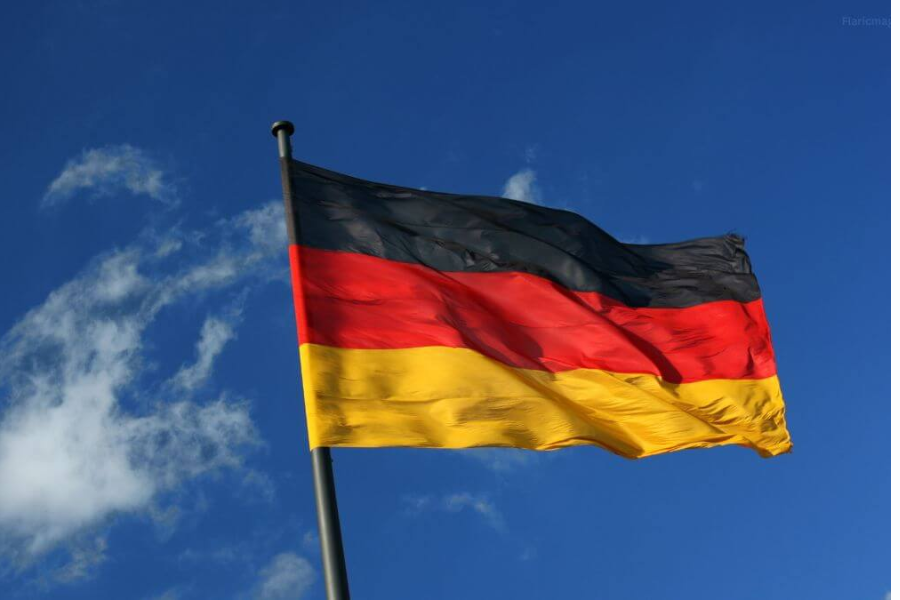Germany Flag Hex Colors: A Comprehensive Look at Their Symbolism and Usage
Introduction to the German Flag
The German flag, adorned with its striking stripes of black, red, and gold, is much more than a simple piece of fabric fluttering in the breeze. It is steeped in history and rich symbolism, echoing the values and experiences of millions of people. Whether you’re a passionate traveler or someone intrigued by national symbols, understanding the hex colors of the German flag unveils a captivating narrative.
These colors were not selected randomly; they encapsulate themes of unity, resilience, and hope, which have persisted through centuries of transformation. From historic conflicts to contemporary celebrations, the flag has borne witness to pivotal moments in Germany’s journey. In this article, we will explore the profound meanings behind each color and how they are celebrated in various contexts within Germany and beyond, shedding light on why these hues hold such significance for both citizens and admirers alike.
The History and Evolution of the German Flag
The history of the German flag traces back to the early 19th century, showcasing a narrative rich in evolution and transformation. Its design features three horizontal stripes—black, red, and gold—which emerged from the uniforms of the Lützow Free Corps during the Napoleonic Wars. This choice of colors was not just aesthetic; it symbolized a burgeoning national identity amidst the backdrop of war and struggle.
Initially, different regions of Germany displayed various flags featuring these colors, reflecting the fragmented nature of the nation. However, in 1919, the modern version of the flag was officially adopted, signifying democracy and unity for a nation seeking renewal after the devastation of World War I.
The flag has undergone further transformations, mirroring the political landscape of Germany. After World War II, it became a symbol of reconciliation and peace, embraced by West Germany in 1949 as a way to forge a new national identity. Following the reunification of Germany in 1990, the tricolor banner gained new significance, standing not only as a national emblem but also as a representation of the nation’s cultural identity in a global context.
The Symbolism Behind Each Color on the Flag
The German flag is defined by its bold colors—black, red, and gold—each of which carries profound significance rooted in history and collective identity.
Black
Often associated with strength and determination, black symbolizes the resilience of the German people throughout the numerous challenges they have faced over time. It embodies the idea of overcoming adversity, reflecting the spirit of perseverance that has characterized the nation’s journey.
Red
The color red is emblematic of bravery and sacrifice. It captures the valor shown by those who fought for Germany’s unity and freedom during tumultuous periods in its history. Red resonates with the passion and dedication of individuals striving to uphold the principles of liberty and democracy, making it a powerful symbol of national pride.
Gold
Gold represents wealth and prosperity, embodying hope for a bright future. This color signifies ideals tied to growth, enlightenment, and progress. It serves as a reminder of the aspirations of the German people for a society rooted in opportunity and success, thus enriching the narrative of the flag’s colors.
Together, these colors weave a story that resonates deeply with many Germans today. They serve not only as reminders of national pride but also encapsulate the historical struggles that have shaped modern German identity. The interplay between black, red, and gold fosters unity among citizens across diverse landscapes within Germany.
How the Colors are Used in Different Contexts
The colors of the German flag—black, red, and gold—are versatile symbols that appear in various contexts, each reflecting different facets of German identity.
Sports
In the realm of sports, these hues are proudly displayed by athletes during international competitions, fostering a sense of unity and national pride. During events like the FIFA World Cup, fans don the national colors, transforming stadiums into vibrant celebrations of German culture and camaraderie. This collective spirit encapsulates the passion of a nation rallying behind its athletes.
Politics
In political contexts, the flag’s colors symbolize democratic values and freedom. Government buildings are often adorned with the flag during significant events or commemorations related to German history, serving as a visual reminder of collective identity and resilience. National holidays, such as Unity Day, see widespread displays of the flag, reinforcing its role as a symbol of unity and democratic principles.
Cultural Festivals
Cultural festivals across Germany embrace the black, red, and gold colors as well. Events like Oktoberfest prominently feature the flag, as people gather to celebrate traditional music, food, and heritage. These occasions serve to strengthen community bonds while honoring the rich cultural tapestry of the nation.
Fashion and Art
In contemporary culture, fashion designers utilize these striking colors to create bold statements in their collections, reflecting themes of patriotism and national identity. Artists also draw inspiration from the flag’s colors, incorporating them into street murals and public art installations to express social messages or celebrate historical events. The flag’s colors become a canvas for creativity, reflecting both pride and critique of societal issues.
Examples of the German Flag in Action
The German flag often makes a striking appearance during significant national events, highlighting its importance in the country’s collective consciousness. From sports matches to cultural parades, it waves proudly in the hands of enthusiastic fans and participants.
Sports Events
During major sporting events, such as the UEFA European Championship, the flag is a common sight. German supporters don outfits adorned with black, red, and gold, displaying their national pride as they cheer on their team. This vibrant display of unity fosters a sense of belonging, transcending regional differences.
Cultural Celebrations
Cultural festivals, such as Oktoberfest, showcase the flag prominently. As people gather to enjoy traditional music, food, and camaraderie, the colors of the flag serve as a backdrop to the celebrations, embodying the spirit of togetherness and heritage.
Political Observances
On national holidays like Unity Day, government buildings and public spaces are adorned with the flag, reinforcing its status as a symbol of unity and democratic values. These observances create moments of reflection on Germany’s history and the progress made toward unity and reconciliation.
Artistic Representations
Artists frequently utilize the flag’s colors in their works, exploring themes of national identity and historical reflection. Public art installations, murals, and performances often incorporate black, red, and gold, engaging with contemporary societal issues while honoring the nation’s past.
Controversies Surrounding the Use of the German Flag
While the German flag is a symbol of national pride for many, it has also sparked debates and controversies. Its colors—black, red, and gold—are often associated with both unity and division, making its use a complex issue in contemporary society.
Co-optation by Extremist Groups
In recent years, the flag has been co-opted by various extremist factions, which have tarnished its image by using it to promote agendas that contradict its intended meaning of democracy and freedom. This appropriation complicates the narrative surrounding the flag, as many struggle to reconcile its positive connotations with the actions of those who misuse it.
Public Perception
Public displays of the flag can evoke strong emotions. For some, it represents a celebration of German identity and unity, while for others, it serves as a reminder of historical atrocities. This duality complicates how people interact with the flag in different settings, leading to discussions about national pride versus historical accountability.
Sporting Events and Nationalism
Sporting events often highlight these tensions. While fans waving the flag can create an inspiring atmosphere of nationalism, others may perceive it as exclusionary or aggressive. This ambivalence raises important questions about the boundaries of national identity and the implications of public displays of patriotism.
As society continues to grapple with these complexities, discussions around the German flag evolve, reflecting the diverse perspectives of its citizens and the ongoing dialogue about national identity.
Conclusion
The hex colors of the German flag—black, red, and gold—carry a rich history and profound symbolism. Each hue represents vital aspects of the nation’s identity, from its struggles for unity to its commitment to democracy. Understanding these colors enhances our appreciation of the flag’s significance, revealing layers of meaning that resonate with both citizens and admirers worldwide.
These colors are not mere aesthetic choices; they are steeped in a narrative that reflects the resilience, aspirations, and collective experiences of the German people. Whether displayed at sporting events or during national celebrations, the German flag evokes pride and connection.
However, it is essential to approach discussions about this emblem with sensitivity, recognizing the historical controversies surrounding its use. Acknowledging this complexity fosters deeper conversations about national identity and representation, prompting us to reflect on what it means to be a part of a nation with a diverse and multifaceted history.
As we explore how these hues manifest across various contexts—from art to fashion—we recognize their versatility. The Germany flag hex colors serve as a powerful reminder of a vibrant culture shaped by trials, triumphs, and an enduring spirit of unity.
Stay in touch to get more news & updates on vlineperol.blog.







